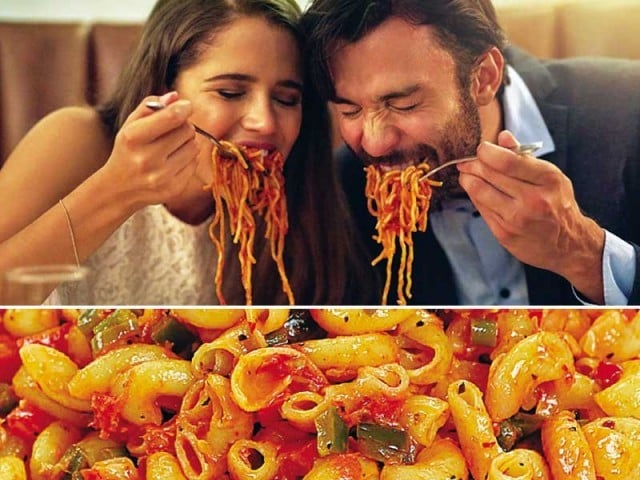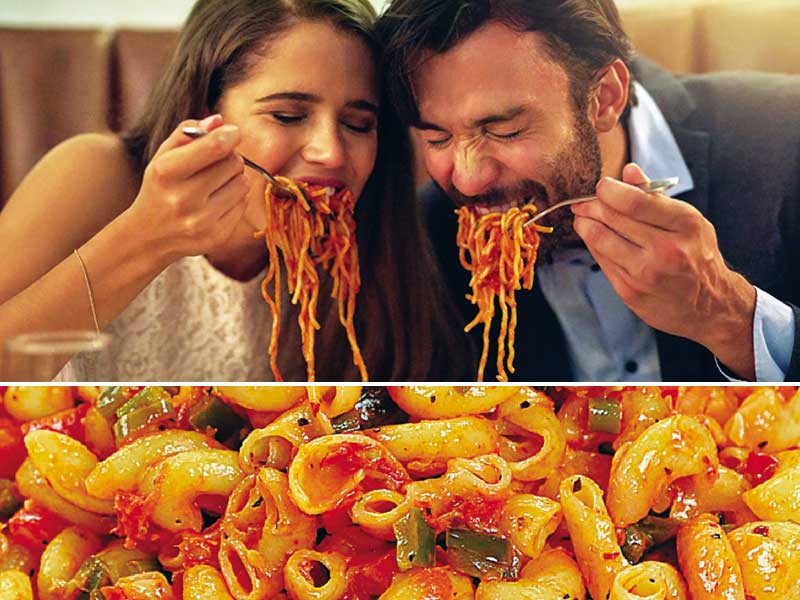
Is pasta only carbohydrates and are there any benefits to this diet? Photo: File
New year, you and a new diet plan. This is a common dieting question that comes to mind.
A popular dieting technique is to create a ‘black list’ of foods, in which it is common to exclude ‘carbohydrates’ or packaged foods, which may mean avoiding pasta. But do we really need to blacklist pasta to improve our diet?
This approach we call the ‘minimizational approach’ to nutrition, in which we choose only one specific element in the food, but keep in mind that pasta is not just carbohydrates.
Let’s look at the statistics for proof. One cup of about 145 grams of cooked pasta contains about 38 grams of carbohydrates, 7.7 grams of protein and 0.6 grams of fat. It also contains all the water that is absorbed during cooking and contains many other vitamins and minerals. But pasta is mostly carbs!
Your day on a plate
You probably know how many calories (energy) we are recommended to eat in a day. This recommendation may be different for everyone. Such recommendations depend on body size, gender, and physical activity, but you may not realize that there are also recommendations for the macronutrient profile, or types of foods, that contribute to that energy.
Fat, carbohydrates, and protein are macronutrients. Macronutrients are broken down in the body to produce energy for our bodies. Acceptable ‘macronutrient’ distribution limits define the proportion or percentage of ‘macronutrients’ that provide that energy. These limits are determined by health experts who look at its health effects and eating habits.
Its purpose is to ensure that we eat a quality diet within a certain range as too much or too little of any food can be harmful to health. This ratio is also designed to ensure that we get enough of the vitamins and minerals we normally get with energy from foods. We should get 45-65% of our energy from carbohydrates, 10-30% from protein and 20-35% from fat.
“Each gram of protein contains the same amount of energy as one gram of carbohydrate.”
Macronutrient ratios mean that it can be healthy to eat 1.2 to 6.5 times more carbohydrates per day than protein because each gram of protein contains the same amount of energy as one gram of carbohydrate. The ratio of carbohydrates to protein in pasta is 38 grams to 7.7 grams, a ratio of about five to one, which is within the acceptable range of the macronutrient distribution.
This means that the pasta actually has enough protein to balance out the carbs. It’s not just because of the eggs in pasta, but wheat is another source of protein and makes up about 20 percent of the protein consumed worldwide. The relationship between calorie levels and weight gain is also not so easy to explain.
In the context of a healthy diet, it has been found that people lose more weight when they include pasta regularly in their diet. And a review of ten different studies found that pasta is better than bread or potatoes for post-meal blood glucose levels.
Instead of giving up ‘spaghetti’ (pasta) you should consider reducing your portion sizes or switching to whole wheat pasta, which is high in fiber, which offers gut health benefits. and can help you feel fuller for longer. Gluten-free pasta contains slightly less protein than wheat pasta. So while healthy, there are no major health benefits to eating gluten-free pasta for most people who don’t like gluten at all.
‘If you have Italian sauce with the pasta, then the taste is made’
Pasta is not usually eaten as the only dish, so while some people warn of the risks of blood sugar spikes when eating ‘open carbs’ (meaning just not eating anything else with carbs). . In general, eating pasta does not pose any such risk. When pasta becomes a staple of a meal, it also becomes a way for people to eat more vegetables with sauces and the like. Not just eating pasta is also important for your protein profile.
Plant foods are generally not complete proteins, which means that we need to eat combinations of them to get all the different types of amino acids (the building blocks of protein) that we need to survive. . While we often focus on carbohydrates and energy, pasta is a great source of nutrition. Like most foods they are not just macronutrients, they also contain micronutrients.
One cup of cooked pasta contains about a quarter of the recommended daily intake of vitamins B1 and B9, half of the recommended intake of selenium and ten percent of our iron needs. When we eat pasta simply as a leftover food, then it becomes good for health. As the pasta cooks and cools, some of the carbohydrates turn into resistant starch.
This starch, named for being resistant to digestion, provides less energy and is better for blood sugar levels. So leftover pasta, even if you reheat it, has fewer calories than the night before.
Carbohydrates come in different forms and in different foods
There is a lot of talk about cutting carbs for weight loss, but you have to remember that carbs come in different forms and in different foods. Some of them, like pasta, provide other benefits.
When it comes to reducing your carbohydrate intake, the first thing to think about is simple sweets. Basic carbohydrates, often served with vegetables before cutting, may be the healthiest food group possible. (Courtesy of the BBC)
(function(d, s, id){
var js, fjs = d.getElementsByTagName(s)[0];
if (d.getElementById(id)) {return;}
js = d.createElement(s); js.id = id;
js.src = “//connect.facebook.net/en_US/sdk.js#xfbml=1&version=v2.3&appId=770767426360150”;
fjs.parentNode.insertBefore(js, fjs);
}(document, ‘script’, ‘facebook-jssdk’));
(function(d, s, id) {
var js, fjs = d.getElementsByTagName(s)[0];
if (d.getElementById(id)) return;
js = d.createElement(s); js.id = id;
js.src = “//connect.facebook.net/en_GB/sdk.js#xfbml=1&version=v2.7”;
fjs.parentNode.insertBefore(js, fjs);
}(document, ‘script’, ‘facebook-jssdk’));



